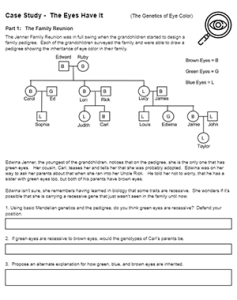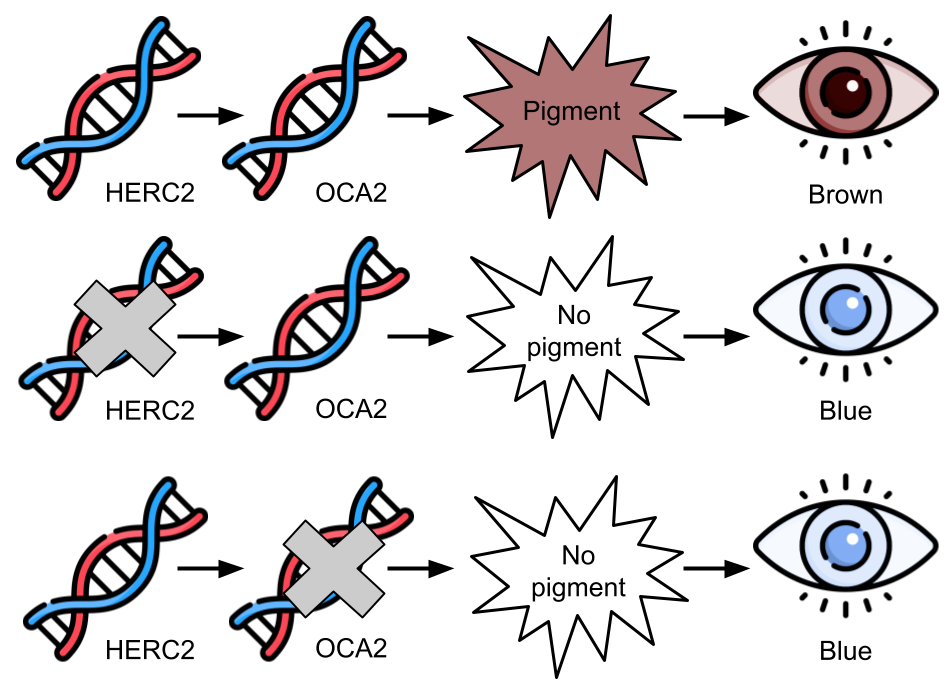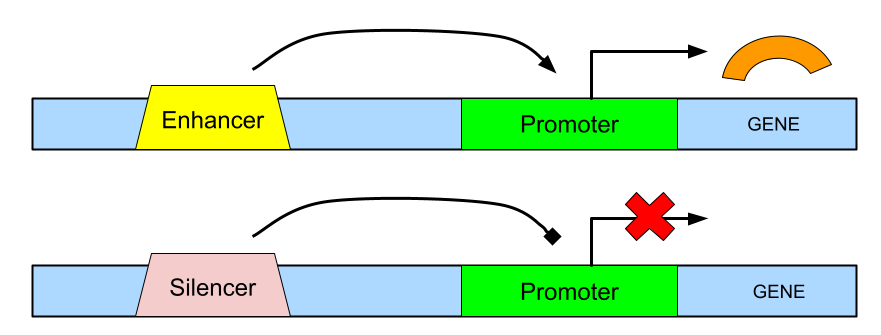
This mini case study explores eye color in humans. The genetics of eye color is complicated! It is not simply a case of brown being dominant to blue. There are interacting genes that influence the color: specifically, OCA2, and HERC2. This case study explores those interactions.
First, students analyze a pedigree chart showing eye color patterns in a family (blue, green, and brown.) Basic Mendelian genetics cannot easily explain these patterns. Brown may appear to be dominant to blue in most cases, but then where does the green eye color come from?
After examining the pedigree, students propose alternate explanations for the inheritance of eye color. Depending on their genetics background, students may suggest that the trait is controlled by multiple genes (polygenic) or that the alleles are codominant.
In Part 2, students examine earlier models of inheritance in eye color. The bey2 gene and the gey gene had been previously established as eye color alleles. The combination of these genes results in a blue, green, or brown phenotype. For example, a person with bbGG genotype has green eyes.
Students practice their Punnett square skills by determining the phenotypic ratios in this model. – BbGg x bbGg. Thought this model is slightly better than the original Mendelian model, it still cannot account for all the differences in human eye color.
HERC2 and OCA2
In the next part, students explore a newer model of eye color inheritance. This involves two genes that influence eye color: HERC2 and OCA2. This model is definitely more complicated. It involves mutations in one gene influencing the activity of the other. Basically, HERC2 can act as a switch that turns OCA2 on of off. If OCA2 is turned off, the resulting eye color is blue.

Transcription Factors
Finally, students explore the role of transcription factors in gene expression. Enhancers can turn on genes, and silencers can turn them off. Both may play a role int he expression of the eye color trait.

Though this model does explain some of the inheritance patterns of eye color, it is also not complete. Green eyes are not included in the model. Green eye color is thought to be variations in hue and saturation levels. Entirely separate genes may influence these levels, resulting in various shades of green, like hazel.
In short, eye color genetics in humans is complicated!

